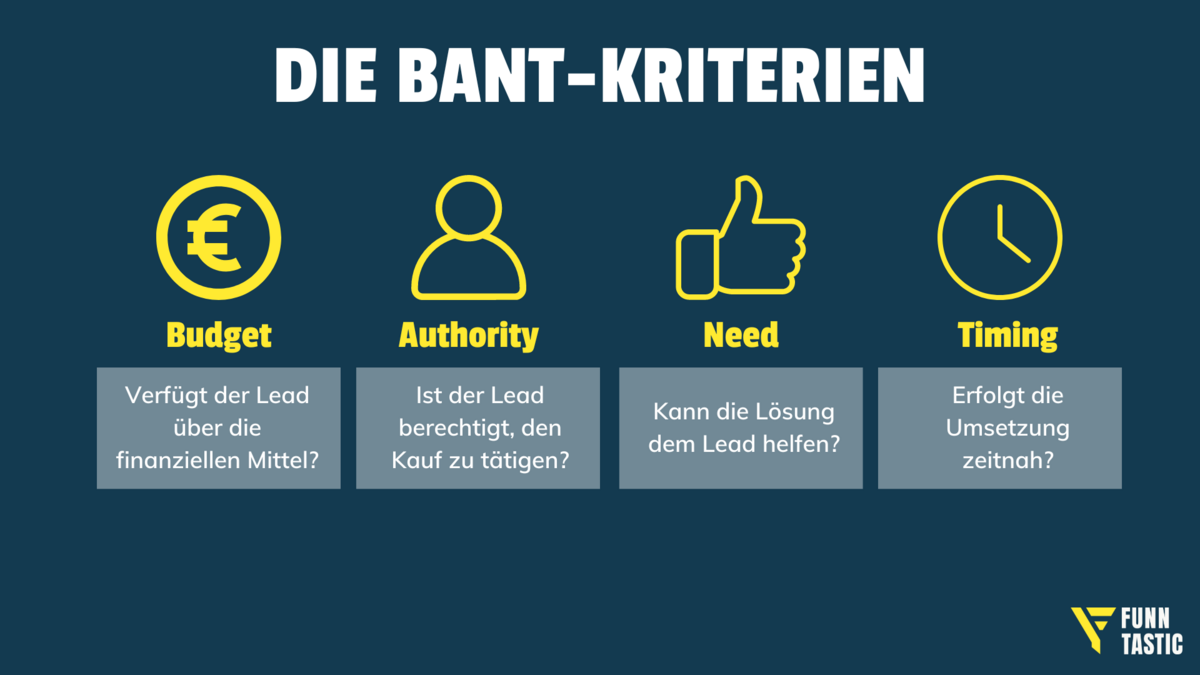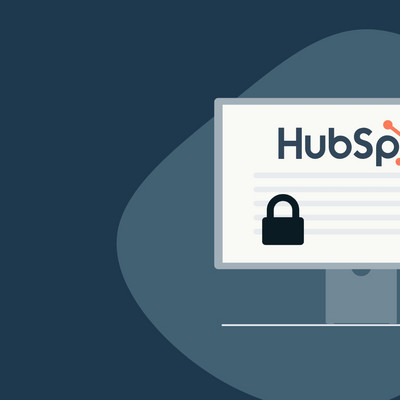A lead is a person (or company) who has expressed a clear interest in what your company has to offer - be it topics, products or services. This is because they have left their details and contact details in exchange for one of your content offers. For example, to download certain content on your website, sign up for your newsletter, request a demo or take part in an event.
A "good" lead is a lead that is already at the bottom of the sales funnel - they have not only shown interest and made themselves identifiable, but - following a strategic communication and offer process (lead nurturing) - are so convinced of your offer that they are ready to make a purchase. These leads are therefore most likely to become potential customers. It is essential for companies to recognize and develop such valuable leads if they want to make further profits and grow. But how can you recognize good leads and thus generate successful leads?
Recognizing promising leads - the 4 BANT criteria and 5 other indicators
In another blog post, we will take a closer look at lead scoring, proven systems for evaluating leads in terms of their sales maturity and relevance. That's why we won't be focusing on all stages of the sales funnel here, but only on the most sales-ready leads and a specific "framework" for determining them, the so-called "BANT" criteria. BANT stands for Budget, Authority, Need and Timeframe.
- When evaluating the budget, we check whether the prospects have the financial means to purchase the product or service
- Authority refers to the lead's decision-making authority - are they authorized to approve or make a purchase?
- Need assesses their need for the product or service. Is it something he urgently needs or wants?
- Timeframe finally takes into account the time frame in which the lead would be willing to make the purchase - note that it is not necessarily about a product, but also, for example, about concluding a contract for certain services.
Example 1
Mrs. Müller, CEO of a medium-sized company, has shown interest in your cloud-based project management software. She has a budget of €10,000 per year for such services and is looking for a solution to increase the efficiency of her team. Their decision should be made within the next three months.
This customer meets all the BANT criteria. He has the budget, the decision-making authority, a clear need and a defined timeframe for the purchase. This makes the prospect a "good" lead.
Example 2
Mr. Schmidt, an intern at a small company, shows interest in your high-end business intelligence software. However, he has neither a fixed budget nor decision-making authority. What's more, the company won't need the software for another year, and it's unclear whether it will have the necessary budget by then.
In this case, decisive BANT criteria are missing. Although Mr. Schmidt shows interest and has a need, he lacks both budget and purchasing authority. In addition, the time frame for the purchase is vague. He would therefore not be a "good", "worthwhile" lead.
The BANT criteria already provide good indications as to whether it is worthwhile for the customer or company to invest in further sales activities (e.g. social selling or similar). But there are other indicators for identifying qualified leads:
Of course, the weighting of these factors depends on your specific business model. However, if you already have some of this information, this will give you a decisive advantage when evaluating lead quality (keyword: MQL and SQL).
Generate or qualify good leads with the help of software
There are various strategies for generating good leads (we take a closer look at these in our article What is the goal of lead management?) The focus is on creating high-quality content that is tailored to the needs and interests of your target group. Through lead nurturing, you sensitize your potential customers to your topics and pick them up where they are on their customer journey.
This is achieved through regular communication, the provision of relevant content and personalized offers. Ideally, sales and marketing work closely together to communicate consistent messages to the outside world and keep each other up to date on the progress of leads.
Since we have already discussed best practices for lead generation in the other article, it is worth mentioning the benefits of marketing automation software, such as HubSpot: Automation plays a crucial role in the digitalization of lead identification, evaluation and nurturing processes.
Conclusion: Recognizing good leads - a crucial step for the success of companies
Generating, qualifying and developing leads is a complex but crucial task in sales and marketing. "Good" leads are not only users who show interest in your product, company or service, but also someone who actually has the capacity and willingness to make a purchase. You can use the BANT criteria and a few other indicators to better assess the quality of your leads. Software tools can make the process of generating and nurturing leads much easier. Good leads can then be seen as a benefit of efficient processes in sales and marketing.




